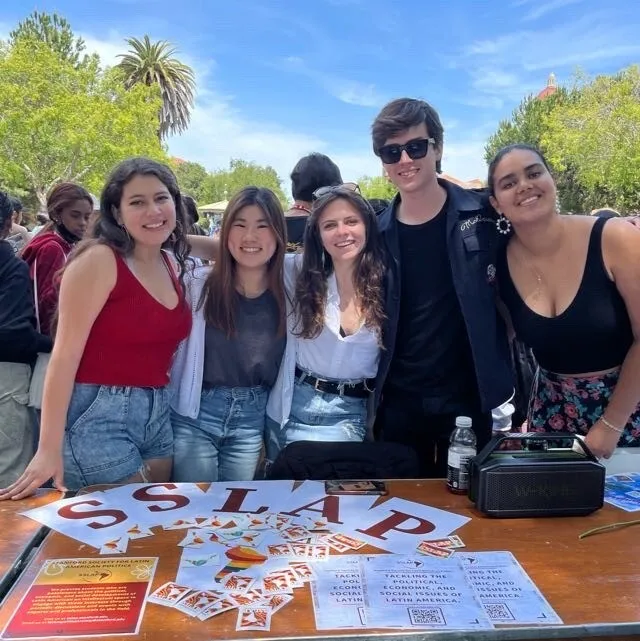Before college, Luciana Bridges ’25 spent 17 years in Lima, Peru, followed by a year in New Orleans to finish up 12th grade. During her subsequent gap year, she returned to Lima to help her Peruvian peers apply to college. When she arrived at Stanford, she was surprised to find gaps in understanding between international Latino students and Latino students born and raised in the U.S.
Bridges said the disconnect can be attributed to socioeconomic differences and language barriers. These differences draw international and domestic Latino students to diverging academic, extracurricular and social pursuits, Bridges said.
“Most international Latinos generally do not have [financial] aid, whereas students who are domestically Latino could come from lower income backgrounds,” Bridges said.
Many international Latino students also grew up speaking Spanish, which she said is not necessarily true of domestic Latino students and can lead to “gatekeeping around who is really Latino if they speak the language or not.”
Witnessing the same disconnect, Tara Hein ’23 and Thay Graciano ’23 M.A. ’24 founded the Stanford Society for Latin American Politics (SSLAP) in 2021, aiming to connect international and domestic Latino students through events, partnerships and educational opportunities. As an affiliate of the Center for Latin American Studies, SSLAP provides students a multidisciplinary academic space to explore the social, economic and political forces that shape Latin America through conversations with faculty and public figures. Previous speakers include Colombian president Gustavo Petro and former Uruguayan president José Mujica.
“International students from Latin America really yearn for creating space and conversations around politics in the region,” said SSLAP president Isamar Marte Núñez ’26, who is from the Dominican Republic. “Having this academic space really opens peoples’ perspectives of how to envision a more globalized world.”
SSLAP has also organized a Latin American film screening and panel discussions with scholars studying Latin America to ignite nuanced discourse on Latin American politics. This year, the club aims to establish a book club to analyze and discuss classical books about Latin American culture and politics, with a particular focus on the Latin American Boom — a literary movement during the 1960s and 1970s that spread the work of Latin American authors across the globe.
“It’s not nice to hear about Latin America suffering, but it’s important to know how to be able to educate other people as well as educate yourself,” said Karen Medina Aparicio ’27, who is from Puerto Rico.
SSLAP members said Latin American history, shaped by a legacy of colonialism, imperialism and foreign intervention, offers wide-ranging lessons in democracy, development and peace-building. Over the last decade, the region has drawn foreign investment and fostered innovations that have bolstered areas of the economy including the digital, technology, infrastructure and healthcare sectors. Yet, the region continues to confront challenges such as systemic poverty, inequality, climate change, migration, corruption, authoritarianism and democratic backsliding.
Juliana Lamm-Perez ’25, SSLAP’s financial officer, grew up in the Bay Area but often visits extended family in Guatemala. She said the organization allows her to meet a diversity of students from Latin America.
“Befriending and getting to know international Latino people has been really valuable, and it is one of the reasons that I wanted to get more involved in SSLAP,” Lamm-Perez said.
Fostering such community is at the heart of several of SSLAP’s initiatives, including its partnerships with El Centro — the Chicano and Latino student center. Members have also promoted its events through multiple student groups including Stanford Latino and Hermanas.
“SSLAP is very much advertised for the entire Stanford community,” said Bridges, who oversees the organization’s community partnerships and communications. She said the club welcomes anyone interested in Latin American politics.
“There are people in both communities who want to have a more mended relationship,” Bridges said.
Lamm-Perez said SSLAP seeks to galvanize U.S. Latino students to engage in Latin American politics. “We want these two groups to interact with each other more, and understand that they are both fighting for the same purpose.”
Bridges urged increased awareness of Latin American diversity and politics within the Stanford community, although she noted that it is difficult to have a “non-ethnocentric vision politically” across the U.S.
“A lot of the protests that happened on campus forgot Latin America,” Bridges said. “In some ways, Stanford is not the most well-versed in Latin American affairs.”
Aparicio echoed the need to establish mutually beneficial relations between Latin America and the U.S., with the aim of recognizing Latin America’s potential to become a leader in “sustainable, equitable development in the 21st century.”
“I want the broader community at Stanford to know that Latin America is a beautiful place. We have beautiful people,” Aparicio said. “Just as we value and respect people here, whenever people from other places visit, they should value and respect people there.”
